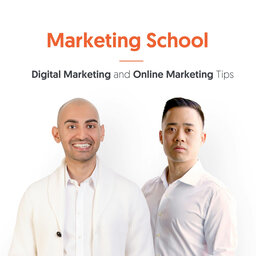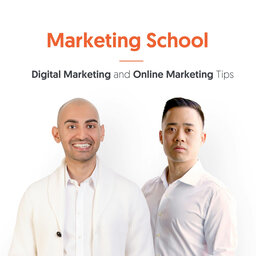7 Growth Hacking Examples You Can Learn From | Ep. #360
In Episode #360, Eric and Neil discuss 7 growth hacking examples you can learn from. Tune in to be inspired by how these companies skyrocketed their branding and acquired more customers using a few tactical strategies. If you want to grow your company effectively, it doesn’t hurt to look to the best!
Time Stamped Show Notes:- 00:27 – Today’s topic: 7 Growth Hacking Examples You Can Learn From
- 00:37 – First is Dropbox
- 00:40 – Dropbox used pay-per-click to acquire more users
- 00:51 – Dropbox was making $60 in revenue per customer
- 01:23 – Second is Airbnb’s growth story
- 01:29 – Airbnb got people to post on Craigslist
- 02:08 – Third is SEMrush
- 02:16 – SEMrush started with a free usage model with the option to upgrade
- 02:56 – Fourth is Hotmail
- 03:05 – Hotmail added “sent from Hotmail” at the end of their email to generate signups
- 03:38 – Fifth is Hubspot
- 03:43 – Hubspot is a content marketing machine which drives a lot of signups
- 04:00 – Hubspot also decided to create free tools
- 04:10 – Hubspot can generate more leads from their free tools at a lesser cost
- 04:26 – Sixth is the Paypal case study
- 04:31 – For every signup, they gave away $20, then reduced this amount over time
- 04:46 – eBay was originally owned by Paypal
- 05:00 – Startups create press
- 05:20 – Startups are directing Facebook and Google’s paid traffic to pages that have incredible content written about them
- 05:54 – By directing traffic, PPC isn’t that bad and the conversion is quite high
- 06:18 – This only works for an authoritative site; the quality of content you have is what attracts people to sign up
- 06:35 – Marketing School is giving away a free 1 year subscription to Olark which is live chat software tool
- 06:48 – Subscribe, rate and review Marketing School
- 06:52 – Text MARKETINGSCHOOL to 33444 for those in the US
- 07:00 – That’s it for today’s episode!
- Make people WANT to know more about you and your product; the quality of your content is the means to do this.
- Offering an initial incentive can drive signups to your product.
- Create great press around your product to show the value of your product.
Leave some feedback:
- What should we talk about next? Please let us know in the comments below.
- Did you enjoy this episode? If so, please leave a short review.
Connect with us:
Learn more about your ad choices. Visit megaphone.fm/adchoices
 Marketing School - Digital Marketing and Online Marketing Tips
Marketing School - Digital Marketing and Online Marketing Tips


